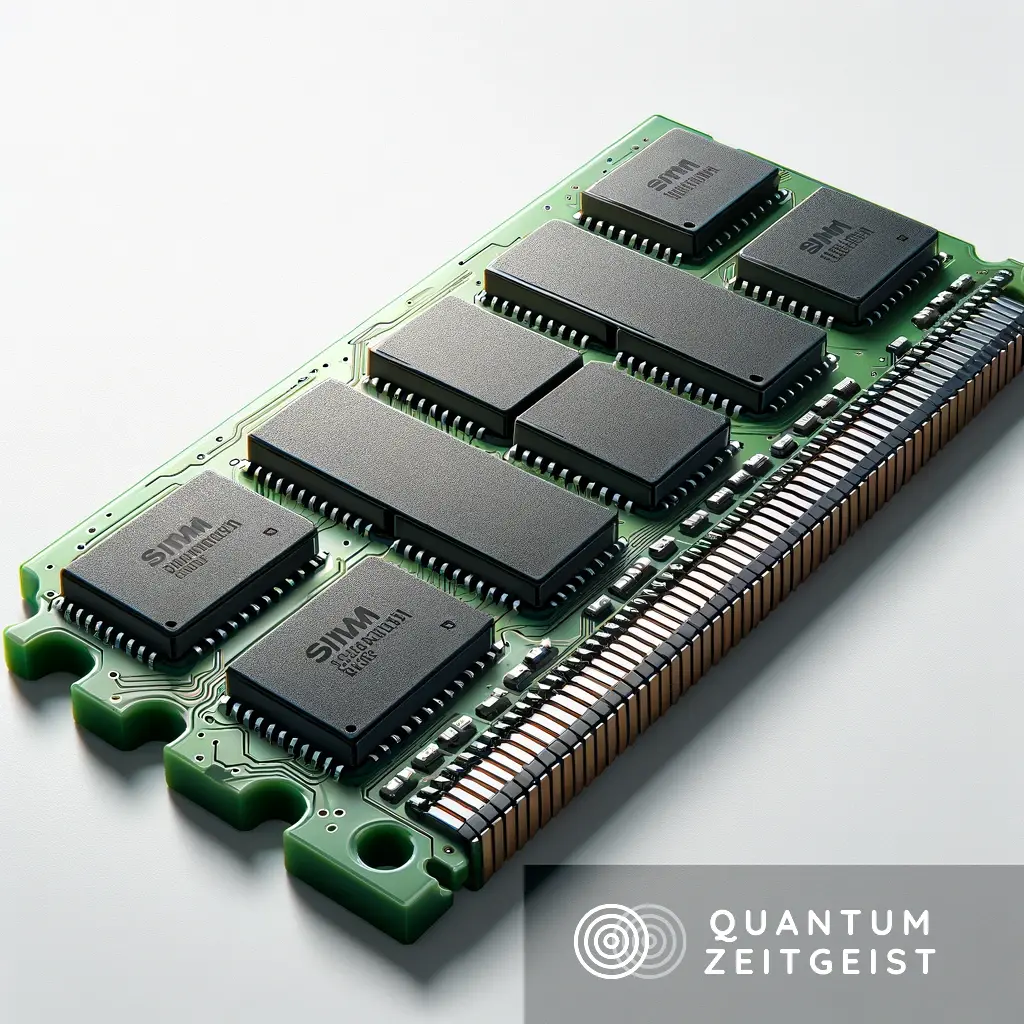Scientists at the University of Rochester, led by assistant professor Stephen M. Wu, have developed a new form of computing memory that is fast, dense, and low-power. The team combined the best qualities of two existing forms of resistive switches used for memory: memristors and phase-change materials. The new hybrid resistive switches, outlined in a study published in Nature Electronics, use 2D materials that can be strained to switch between two different crystal phases, offering different resistance levels that can be used as memory. The team believes this could lead to ultra-fast, ultra-efficient memory for home computers.
Hybrid Phase-Change Memristors: A New Form of Computing Memory
Researchers at the University of Rochester have developed a new form of computing memory that is fast, dense, and low-power. This new form of memory, known as hybrid resistive switches, was created by strategically straining materials that are as thin as a single layer of atoms. The details of this development are outlined in a study published in Nature Electronics.
The new approach combines the best qualities of two existing forms of resistive switches used for memory: memristors and phase-change materials. Both these forms have been explored for their advantages over today’s most prevalent forms of memory, including dynamic random access memory (DRAM) and flash memory, but each has its drawbacks.
Overcoming Limitations of Existing Memory Forms
Memristors, which apply voltage to a thin filament between two electrodes, tend to suffer from a relative lack of reliability compared to other forms of memory. On the other hand, phase-change materials, which involve selectively melting a material into either an amorphous state or a crystalline state, require too much power.
The researchers have combined the idea of a memristor and a phase-change device in a way that can go beyond the limitations of either device. They have created a two-terminal memristor device, which drives one type of crystal to another type of crystal phase. These two crystal phases have different resistance that can then be stored as memory.
Leveraging 2D Materials for Enhanced Performance
The key to this new form of memory is leveraging 2D materials that can be strained to the point where they lie precariously between two different crystal phases and can be nudged in either direction with relatively little power. The researchers engineered it by stretching the material in one direction and compressing it in another, enhancing the performance by orders of magnitude.
This new form of memory could potentially end up in home computers as a form of memory that’s ultra-fast and ultra-efficient. This could have significant implications for computing in general.
Collaborative Effort and Future Challenges
The experimental work was conducted by a team of graduate students led by Stephen M. Wu, an assistant professor of electrical and computer engineering and of physics. The team partnered with researchers from Rochester’s Department of Mechanical Engineering to identify where and how to strain the material.
The biggest challenge remaining to making the phase-change memristors is continuing to improve their overall reliability. However, the team is encouraged by the progress made to date and continues to work towards overcoming this hurdle.
Potential Impact on Technology
The development of hybrid phase-change memristors could potentially change the technology landscape. By combining 2D materials with oxide materials in a new way, there are new possibilities for computing power. This breakthrough technology could potentially detect monolayers with 99.9 percent accuracy in far less time and at a fraction of the cost, compared to traditional methods.
“We’ve combined the idea of a memristor and a phase-change device in a way that can go beyond the limitations of either device,” says Wu. “We’re making a two-terminal memristor device, which drives one type of crystal to another type of crystal phase. Those two crystal phases have different resistance that you can then story as memory.”
“We engineered it by essentially just stretching the material in one direction and compressing it in another,” says Wu. “By doing that, you enhance the performance by orders of magnitude. I see a path where this could end up in home computers as a form of memory that’s ultra-fast and ultra-efficient. That could have big implications for computing in general.”
Quick Summary
Scientists at the University of Rochester have developed a new form of computing memory that is fast, dense, and low-power by strategically straining materials as thin as a single layer of atoms. This new approach combines the best qualities of two existing forms of resistive switches used for memory, memristors and phase-change materials, and could potentially lead to ultra-fast and ultra-efficient memory for home computers.
- Researchers at the University of Rochester, led by Stephen M. Wu, have developed a new form of computing memory that is fast, dense, and low-power.
- The new technology, outlined in a study published in Nature Electronics, is a hybrid of two existing forms of resistive switches used for memory: memristors and phase-change materials.
- Memristors, which operate by applying voltage to a thin filament between two electrodes, have been criticised for their lack of reliability. Phase-change materials, which involve selectively melting a material into either an amorphous state or a crystalline state, require too much power.
- The new hybrid resistive switch combines the advantages of both, using 2D materials that can be strained to the point where they lie between two different crystal phases and can be nudged in either direction with relatively little power.
- The team of researchers, including assistant professors Hesam Askari and Sobhit Singh, are now working on improving the overall reliability of the phase-change memristors.

